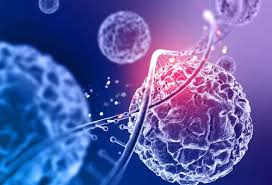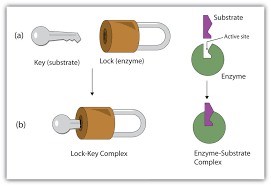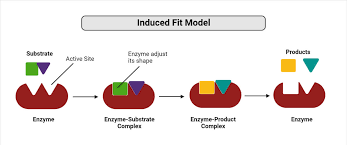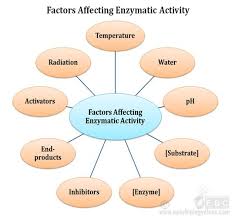
When we talk about aspects related to how to enhance taste, have a longer shelf life or have an improved nutrient profile, the first instinct that comes to one’s mind is to improve the biological characteristics, but what if the answer to all those improvements was hidden in the chemistry of food? Let me introduce the concept of enzymes; they are blocks of protein involved in catalysing processes that take place in the human body, like digestion, respiration and metabolism in organisms. Enzymes are extracted from edible plants or animal tissue. Humans have made considerable advancements in the use of them for their benefit. As enzymes are derived from natural origin, they are active at specific conditions and are biodegradable, providing a better alternative than chemical preservatives. From making cheese to breaking down complex sugars in fruit juices, these microscopic proteins are shaping how we eat. In this article, we will look into how enzymes work in general, how they add value to the food sector and the prospects of enzyme technology
How Enzymes Work: The Biochemical Mechanism
As mentioned before, enzymes are protein molecules that speed up chemical reactions. The molecules upon which the enzymes act are called substrates, and convert them to products. Enzymes must bind their substrates before they can catalyse any chemical reaction. Enzymes are usually very specific as to what substrates they bind, and then the chemical reaction is catalysed. Aside from this, there are other modes as well in which the enzyme’s action takes place(catalysis, substrate presentation, and allosteric modulation).
To describe the mechanism of enzyme action, several models have been proposed:
Lock and key

- Proposed by Emily Fischer in 1898
- This model suggests that the binding of the substrate and the enzyme occurs at the active site in a manner similar to the one where a key fits a lock and results in the formation of an enzyme-substrate complex.
- The enzyme-substrate complex formed is highly unstable and immediately disintegrates to produce the end products of the reaction and to regenerate the free enzyme.
- This process results in the release of energy, which raises the energy level of the substrate molecule, thus inducing the activated or transition state. In this state, some bonds of the substrate molecule are susceptible to cleavage.
- This model, however, has few drawbacks as it cannot explain the stability of the transitional state of the enzyme and also the concept of the rigidity of the active site.
Induced fit hypothesis

- This modified version of the lock-key model was proposed by Koshland in 1958.
- He proposed that the enzyme molecule does not retain its original shape and structure. Instead, the contact with the substrate induces some configurational or geometrical changes in the active site of the enzyme molecule.
- As a result, the enzyme molecule is made to fit the configuration and active centres of the substrate completely. Meanwhile, other amino acid residues remain buried in the interior of the molecule.
- However, the sequence of events resulting in the conformational change might be different.
- Some enzymes might first undergo a conformational change and then bind to the substrate.
- In an alternative pathway, the substrate may first be bound, and then a conformational change may occur in the active site.
The enzyme-substrate complex can also lower activation energy by bending substrate molecules in a way that facilitates bond-breaking, helping to reach the transition state. Finally, some enzymes lower activation energies by taking part in the chemical reaction themselves.
Factors affecting enzyme activity

Enzyme activity is affected by several factors, including:
- Concentration of enzyme: Increasing the enzyme concentration will increase the enzyme reaction rate.
- Concentration of substrate: As the substrate concentration increases, the enzyme reaction rate increases.
- Temperature: Each enzyme has an optimum temperature at which it works best. A higher temperature generally increases enzyme activity. Cold temperature, on the other hand, slows down enzyme activity by decreasing molecular motion.
- pH: Each enzyme has an optimal pH that helps maintain its three-dimensional shape. Changes in pH may denature enzymes by altering the enzyme’s charge.
- Salt concentration: Each enzyme has an optimal salt concentration. Changes in the salt concentration may also denature enzymes.
Key Enzymes in the Food Industry
- Amylases – Used in baking and brewing to break down starch into sugars.
- Proteases – Essential in cheese production and meat tenderization.
- Lipases – Improve flavour in dairy products and assist in fat modification.
- Cellulases – Enhance fruit juice extraction and clarify beverages.
- Pectinases – Aid in fruit juice processing by breaking down pectin.
Applications in Food Production
Enzymes have revolutionised food production by enhancing efficiency and sustainability. Some major applications include:
- Dairy Industry: Enzymes like rennet aid in cheese production, while lactase breaks down lactose for lactose-intolerant consumers.
- Bakery Products: Amylases and xylanases improve dough texture and prolong shelf life.
- Meat Processing: Proteases tenderise meat, making it more palatable.
- Beverage Industry: Enzymes clarify fruit juices and enhance wine fermentation.
- Plant-Based Food Processing: Enzymes help mimic textures and flavours in vegan alternatives.
Enzyme Biotechnology: Innovations & Future Prospects
Advancements in biotechnology are expanding enzyme applications in food science. The integration of genetically engineered enzymes and immobilised enzyme technology has led to more stable and efficient biocatalysts.
Emerging Trends
- CRISPR & Genetic Engineering: Enhancing enzyme specificity and stability.
- Microbial Fermentation: Producing cost-effective and scalable enzyme solutions.
- Nanotechnology in Enzyme Delivery: Increasing enzyme efficiency and shelf life.
- Sustainable Enzyme Production: Using agro-industrial waste as enzyme sources.
The future of enzyme biotechnology looks promising, with potential breakthroughs in developing tailor-made enzymes for specific dietary needs, improved preservation techniques, and more eco-friendly food processing methods.
Safety & Ethical Considerations in Food Enzymes
As the food industry increasingly relies on enzymes, addressing safety and ethical concerns is essential.
Safety Considerations
- Regulatory Frameworks: Agencies like the FDA and EFSA ensure enzyme safety before commercial use.
- Allergenicity & Toxicity: Rigorous testing is required to prevent adverse reactions in consumers.
- Consumer Awareness: Transparent labelling for enzyme-treated foods is crucial.
Ethical Considerations
- Genetically Modified Enzymes: While they improve efficiency, public scepticism remains a challenge.
- Animal vs. Microbial Enzymes: The shift towards microbial enzymes reduces dependence on animal sources.
- Sustainability Concerns: Ethical sourcing and eco-friendly production methods are gaining attention.
TL;DR
Enzymes are revolutionising the food industry by improving taste, texture, shelf life, and sustainability. They function as natural catalysts, replacing chemical additives in food processing. Innovations like genetic engineering, microbial fermentation, and nanotechnology are making enzymes more efficient and versatile. However, concerns about safety, ethical sourcing, and public perception remain. As enzyme technology advances, it has the potential to reshape global food production while addressing challenges like food security and waste reduction.


